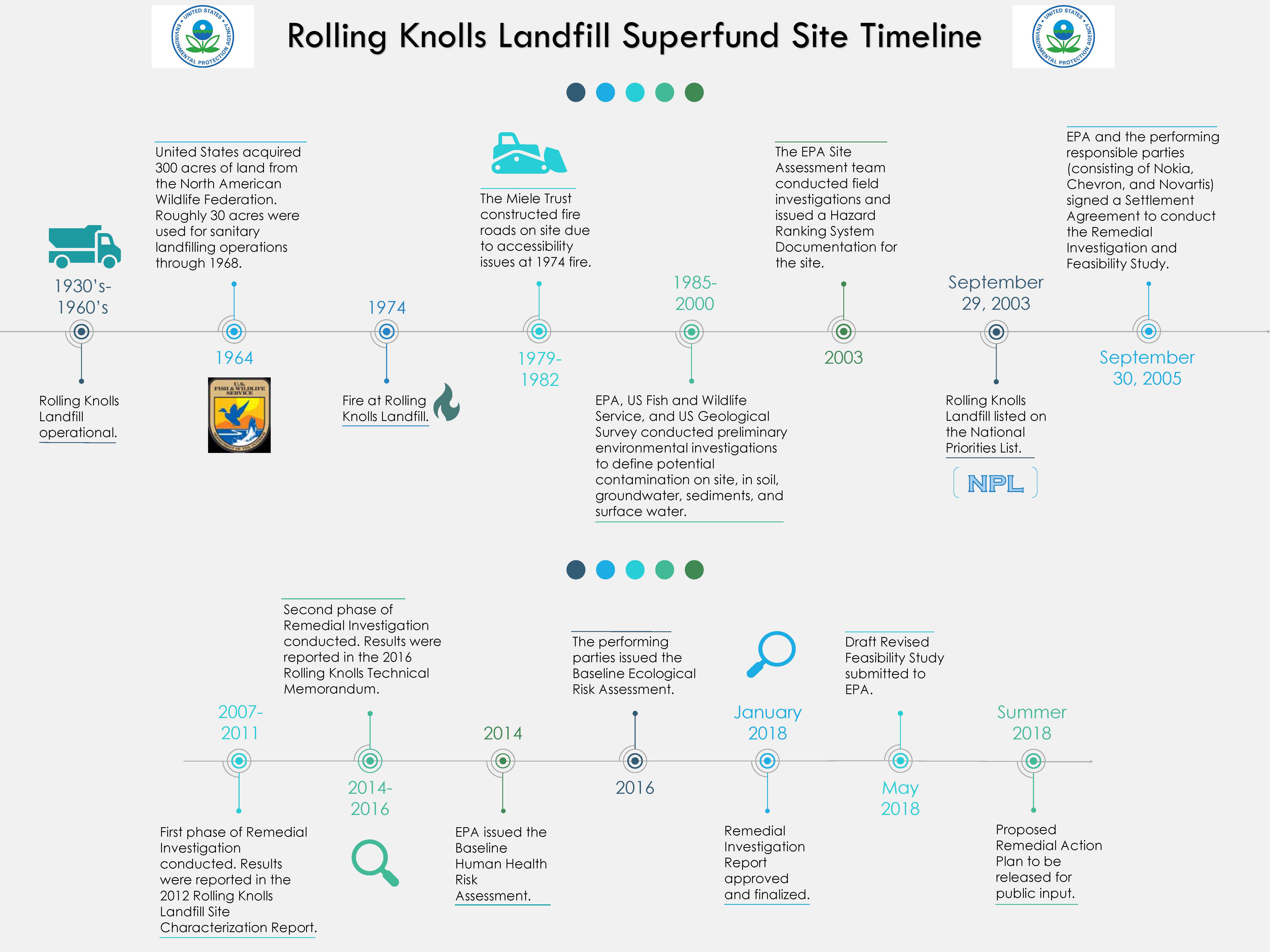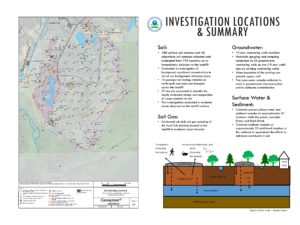Site Location Street Address:
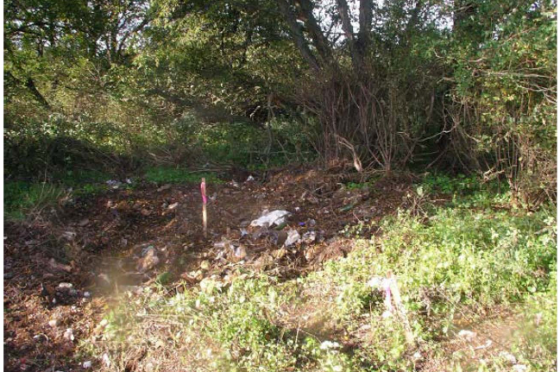

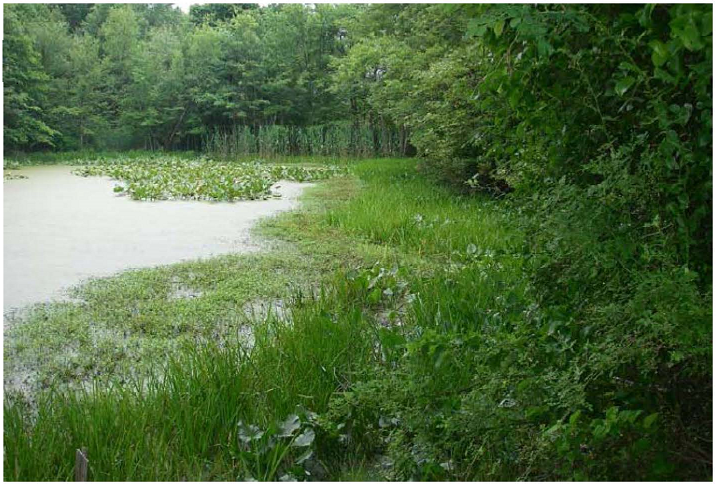
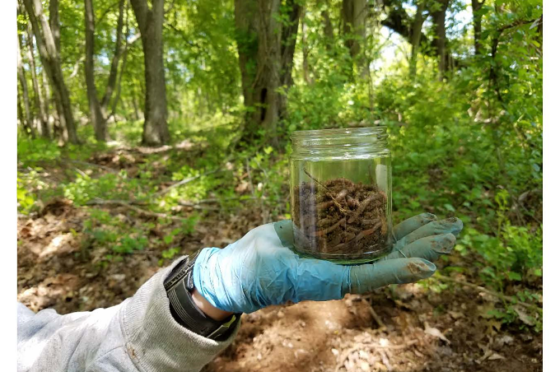

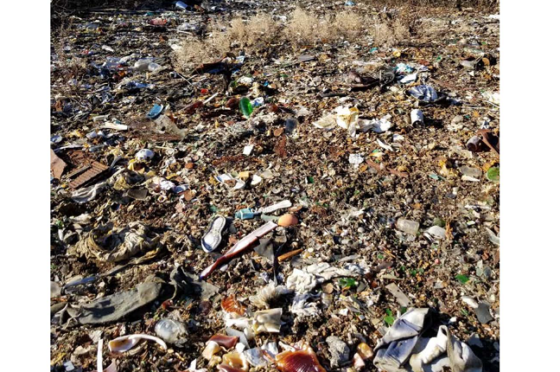

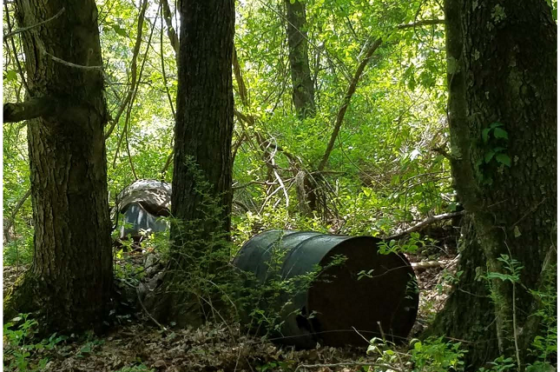

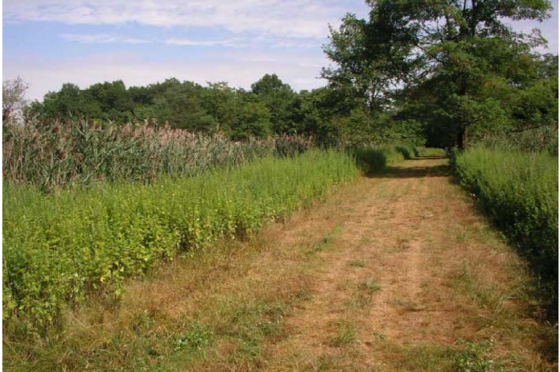

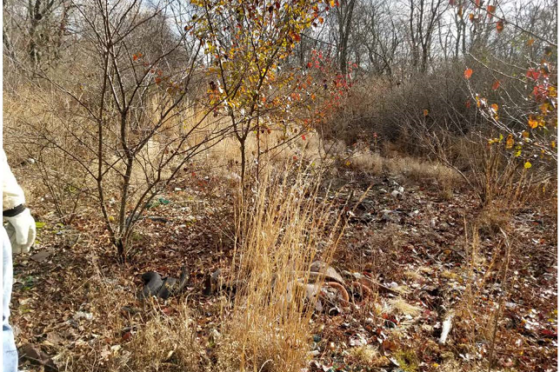








UPDATES: Under ‘Documents’ tab, NJ DEP Letter to EPA – June 2022. NJ DEP Letter on Data Gaps Analysis – July 2022.
Rolling Knolls Landfill Site History
Rolling Knolls landfill is an approximately 200-acre site located in the Green Village section of Chatham Township which was used as an unlined landfill from the early 1930s through 1968. During its use, it received municipal solid waste, construction and demolition debris. According to the Chatham Board of Health, waste included; tree stumps, scrap metal, tires, household refuse, residential septage waste and industrial waste. Herbicides and pesticides were used to control weeds, insects and rodents. Oil was applied on facility roadways to control dust. Most of the site is privately held, however, approximately 30 acres are owned by U.S. Fish and Wildlife Service as part of the Great Swamp National Wildlife Refuge. Landfill operations contaminated soil, sediment, surface water and groundwater. Contaminants consist of elevated levels of: arsenic, lead, mercury, polycyclic aromatic hydrocarbons (PAHs), pesticides, phthalates, polychlorinated biphenyls (PCBs), volatile organic compounds (VOCs), semi-volatile organic compounds (SVOCs), freon compounds, dioxin and furans.
Our Role: Community Action Group
It is the last step, community acceptance, where we, the community, must play an important role. GSWA has established a Community Advisory Group (CAG) through EPA.
The CAG is made up of representatives with diverse community interests, including residents near the site and who may be impacted by the site, local environmental groups, local government officials, local businesses, and possibly responsible parties. The CAG purpose is to provide a public forum for the community to present and discuss their needs and concerns and to offer input to EPA. If you are interested in being a CAG member, please reach out to Sally Rubin at srubin@greatswamp.org as soon as possible.
In addition to forming a CAG, we are working with EPA to obtain an independent professional to review and explain information to the community, including the Feasibility Study and proposed cleanup plan, through EPA’s Technical Assistance Services for Communities (TASC) program. The TASC program will provide a technical advisor to help us understand complex environmental information. This will be followed up with a more formal request for a Technical Assistance Grant (TAG).
Since the fight to stop the jetport over 50 years ago, the residents of our local communities have fought to preserve and protect our environment. Let us continue that tradition and ensure that the Rolling Knolls Superfund is restored to protect human health and the environment through ecological revitalization which supports functioning and sustainable habitat.
Click here to download PDF presentation: What is a CAG? (page 14)
Rolling Knolls Landfill Site History
Rolling Knolls landfill is an approximately 200-acre site located in the Green Village section of Chatham Township which was used as an unlined landfill from the early 1930s through 1968. During its use, it received municipal solid waste, construction and demolition debris. According to the Chatham Board of Health, waste included tree stumps, scrap metal, tires, household refuse, residential septage waste and industrial waste. Herbicides and pesticides were used to control weeds, insects and rodents. Oil was applied on facility roadways to control dust. Most of the site is privately held, however, approximately 30 acres are owned by U.S. Fish and Wildlife Service as part of the Great Swamp National Wildlife Refuge.
Landfill operations contaminated soil, sediment, surface water and groundwater. Contaminants consist of elevated levels of arsenic, lead, mercury, polycyclic aromatic hydrocarbons (PAHs), pesticides, phthalates, polychlorinated biphenyls (PCBs), volatile organic compounds (VOCs), semi-volatile organic compounds (SVOCs), freon compounds, dioxin and furans.
EPA Determination: Superfund
After many years of investigation, EPA determined that the site was a threat to people and the environment and the site was placed on the Environmental Protection Agency National Priorities List for cleanup in 2003. What exactly does this mean?
In 1980, after toxic waste dumps such as Love Canal received national attention and the public learned about the risks to human health and the environment caused by contamination, Congress established the Comprehensive Environmental Response, Compensation and Liability Act (CERCLA), more commonly known as Superfund. The Superfund law allows EPA to clean up contaminated sites, including requiring responsible parties to perform the cleanup or pay for it.
According to EPA, Superfund goals are:
- Protect human health and the environment by cleaning up polluted sites
- Make responsible parties pay for cleanup work
- Involve communities in the Superfund process, and
- Return Superfund sites to productive use
After having listed Rolling Knolls as a Superfund site, EPA identified potentially responsible parties (PRPs) who then conducted a lengthy remedial investigation through soil and water sampling and a risk assessment. The next step in the process is an analysis of potential cleanup alternatives, called a Feasibility Study and identification of a preferred proposed cleanup plan.
Rolling Knolls Landfill Status Updates:
- July 2021: Memorandum of Understanding
- September 2020: Rolling Knolls Document Review Draft Memo
- August 2020: Freedom of Information Act request – See Documents Tab, FOIA
- April 2020: Response to USDOI Comments on Draft Feasibility Study Report
- July 31, 2019: Feasibility study and remediation options (see meeting summary, located here)
- May 13, 2019: Topic TBA
- April 11, 2019: Regular meeting; discussion of human risk assessment.
- March 11, 2019: Regular meeting; discussion of environmental risk assessment.
- February 2019: Currently awaiting feasibility study to be released. The feasibility study will be followed by a 30 day public comment period.
- September 2018: The Rolling Knolls Feasibility Study and proposed cleanup plan was due to be released by the EPA in September 2018.
- June 2018: At a Public Information Session held by EPA in June, the following potential cleanup options were listed:
Soil Alternatives:
-
- No action
- Site controls (such as institutional controls, fencing, signage)
- Site controls, capping of selected areas to reduce overall risk and remediation of additional areas of concern
- Site controls, excavation and offsite disposal of selected area to reduce overall risk and remediation of additional areas of concern
- Site controls and capping of all landfill material
Groundwater Alternatives:
-
- No action
- Source control and monitoring
- Source control and monitoring, with a contingent remedy
The proposed cleanup plan will summarize preliminary conclusions and delineate why the selected option appears most favorable.
The proposed plan must be protective of human health and the environment and must comply with the law. Additionally, seven other factors are weighed in determining the preferred cleanup plan. They are:
-
- Long term effectiveness
- Reduction of toxicity
- Short term effectiveness
- Implementability
- Cost
- State acceptance
- Community acceptance
Meeting Information
NEXT MEETING CANCELLED: May 3, 2022 at 6 p.m. via Zoom
Please e-mail Sally Rubin at srubin@greatswamp.org to be added to the participant list.
- New – Mar 29 Meeting Minutes
In-person meetings temporarily closed.
Great Swamp National Wildlife Refuge, Helen C. Fenske Visitor Center
32 Pleasant Plains Road, Basking Ridge, New Jersey 07920 Google Map
Archive of Minutes and Agendas:
March 29, 2022:
- Mar 29 – YouTube Recording of Meeting
- Mar 29 Meeting Minutes
- Mar 29 – CAG Meeting Agenda
- Department of Fish & Wildlife Data Gaps Analysis
- EPA Letter from 12-1-21
February 15, 2022:
- Feb 15 – YouTube Recording of Meeting
- Feb 15 – CAG Meet Minutes
- Feb 15 – NJDEP Letter, 8-18-2022, Re lll
- Feb 15 – FWS Presentation
- Feb 15 – GEI Region 2 LF Ranking vs RKLF
- Feb 15 – GEI Region 2 LFs Summary
June 17 2021:
April 27 2021:
- April 27 Agenda: There is no formal agenda for this session – this is a continuation of the April 15 meeting so the EPA can address all public comments.
- April 27 – Meeting Summary
- April 27 – YouTube Recording of Meeting
April 15 2021:
- April 15 – Meeting Agenda
- April 15 – EPA Presentation – Site Overview with draft FS
- April 15 – YouTube Recording of Meeting
January 14 2021:
- Jan 14 – Meeting Notes
- Jan 14 Meeting Agenda
- Jan 14 CAG Meeting summary
- GEI CAG presentation 1-14-21
- Rolling Knolls CAG SAP Presentation 1-14-21
- YouTube Recording of Meeting
April 2020: Response to USDOI Comments on Draft Feasibility Study Report
March 30, 2020
September 23, 2019
- Sept 23 – Meeting Minutes
- Sept 23 – Agenda
- DOI Rolling Knolls Landfill Draft FS Assessment Report (2019)
- Sept 23 – Rolling Knolls DOI FS Assessment
- Sept 23 – Rolling Knolls DOI FS Assessment Introduction
- Sept 23 – Rolling Knolls DOI NRDAR Presentation
July 31, 2019
- July 31 – Meeting Agenda
- July 31 – EPA Feasibility Study Process Presentation
- July 31 – Appendix C – sampling locations
May 13, 2019
April 11, 2019
- April 11 Meeting Minutes
- April 11 Meeting Agenda
- April 11 Rolling Knolls Superfund Factsheet
- April 11 Rolling Knolls Superfund Presentation
- April 11 Human Health Risk Assessment
March 11, 2019
- March 11 – Meeting Minutes
- March 11 – Meeting Agenda
- March 11 Presentation by Fish and Wildlife Service
- March 11 – Baseline Environmental Risk Assessment
- March 11 – Baseline Health and Human Risk Assessment
December 3, 2018:
October 29, 2018:
- Meeting Agenda
- Meeting Minutes
- TASC Presentation (Technical Assistance Services for Communities)
- EPA Presentation for Oct 29, 2018
September 17, 2018:
- Meeting Agenda
- Meeting Minutes
- EPA Presentation for Sept 17, 2018
Presentations and Informative Documents:
- Dec 3 2018 Presentation – Remedial Investigation – determining the nature and extent of contamination at the site.
- PDF Brochure – Technical Assistance Services for Communities (TASC)
- EPA Public Reports and Documentation
- EPA’s Technical Reports and Studies for Rolling Knolls Site
Links for further information:
- NJ DEP Letter to EPA – June 2022
- NJ DEP Letter on Data Gaps Analysis – July 2022
- NJ DEP Letter to EPA – September 2022
- EPA Trespasser Calculations – June 2018
- NJ DEP Letter to EPA – May 2021
EPA Responses on Rolling Knolls
- EPA letter to Congresswoman Sherrill – June 22, 2022
- EPA Supplemental Information to Respond to April 29, 2022 Letter from Congresswoman Sherill
- EPA letter to Chatham – December 1, 2021
Congresswoman Mikie Sherrill (NJ-11)
Letter sent from Congresswoman Sherrill to EPA and Fish & Wildlife – April 29, 2022
Daily Record Article
‘Chicken or egg?’ Nonprofit will take Superfund site if EPA agrees to remediate it. William Westhoven, Morristown Daily Record April l3, 2022.
Fish & Wildlife Documents
December 2021 Documents – Results of Fish & Wildlife investigation from this past spring/summer, 2021, findings augment the data presented in the Remedial Investigation in a few key areas. These areas include: contamination at depth in the landfill, a better horizontal extent of contamination profile on Refuge land, a better understanding of migration pathways under various redox conditions, presence of PFAS, empirical observations of active leaching, and locations of additional drum carcasses. Of particular note is the high concentrations of mercury that appear throughout the entire study area.
MOU Document
FOIA Documents
April 2021 Documents
March 2021 Documents
- March 29 FOIA Release – Download .zip file (37 files 83.2 MB)
- Feasibility Study Report Revised Draft for US EPA v2
- Feasibility Study files – Download .zip file (9 files, 7.10 MB)
- Tables – Download .zip file (20 files 1.58 MB)
February 2021 FOIA Request
- Download all Files: FOIA 2021-02 (41 files 97.7 MB)
January 2021 FOIA Request:
- Download All documents (30 files, 37.4 MB)
- EPA memo to DOI 1-2020
- DOI comments on FS 7-2018
- DOI Comments to EPA 2-2018
- Geosyntec tables
- EPA alternatives 12-2017
- DOI compliance memo 5-2015
- DOI Comments to EPA 6-2018
- PRP Letter to DEP 11-2019
- DOI ECM 07- Collaborative Decision Making at Mixed Ownership Sites
- NJDEP Comments on March 2017 DSRA Tech Memo
- DOI letter to EPA 8-2018
- Geosyntec memo to DEP 7-2018
- EPA letter to DEP 12-2019
- EPA Comments on March 2017 DSRA Tech Memo
- EPA Wilderness Guidance
- EPA Comments draft FS 5-2018
- DOI to DEP 9-2019
- EPA to DOI 8-2018
- EPA comments to FS 7-2018
- Geosyntec technical memo 5-2017
- Summit ltr to EPA 4-2020
- Integral memo residual risk 9-2018
- Millburn_letter_DEP_4-2020
- EPA ltr to Arcadis 4-2017
- DOI Comments 4-2017
- Geosyntec memo to DEP 6-2017 alternative remedial standards
- Resolution restriction Development 6-1988
- Rolling Knolls FS Report – Appendix D
- EPA Comments to December 2017 Draft Feasibility Study
Supplied by EPA:
Four Interim Release Letter 2021-02-02 Letter
Carpenter to Kahan 01-04-21
Rolling Knolls Landfill Revised Executive Summary 12-20-20
Rolling Knolls Landfill Draft 2018 FS Specific Comments 12-20-20
Rolling Knolls Landfill Draft 2018 FS General Comments 12-20-20
Cover Letter Rolling Knolls Landfill EPA FS Comments 12-20-20
DEP Comment Letter to EPA – Rolling Knolls 8-18-20
Rolling Knolls DEP Response to July 2018 Draft FS Report
December 2020 FOIA Request:
- December 2020 FOIA – All Documents: Download .zip file (32 files, 51 MB).
August 2020 FOIA Request:
- EPA letter to Chatham 1-21-20
- EPA internal email re DOI concerns 1-29-20
- EPA letter to DOI notice liability 4-20-20
- Millburn letter to EPA + DEP 4-23-20
- Chatham letter to EPA alternative 3 12-11-19
- DOI Wyre letter to DEP Maybury 9-9-19
- LS ltr to EPA 5-16-18
- Geosyntec site maps May 2018
- DOI letter to EPA comments 6-15-18
- Geosyntec to DEP 7-3-18 ARS
- Revised draft Feasibility Study July 2018 geosyntec track changes
- draft Feasibility Study Appendix B – July 2018
- DOI comments track changes revised draft Feasibility Study July 2018
- EPA letter to FWS and DOI 8-22-18
- DOI email to EPA 8-24-18
- DOI Wye letter to EPA Flanagan 8-24-18 FS comments
- Integral to Geosyntec App C – Ecological Risk Evaluation Tech Memo 9-14-18
- RK – FOIA – Tables – Compiled
- RK – FOIA – Table 2 prelim screening remedial tech soil
- RK – FOIA – FWS Wilderness Area Excerpts
- RK – FOIA – DOI memo CERCLA response actions 5-15-15
- RK – FOIA – DOI memo collaborative decision making 10-23-07
US Fish and Wildlife Field Investigation:
Executive Summary: This Uniform Federal Policy Quality Assurance Project Plan (UFP-QAPP) is Part 1 of the Work Plan for the Data Gap Site Characterization (DGSC) at the Great Swamp National Wildlife Refuge (Refuge) associated with landfill contamination and debris from the Rolling Knolls Landfill Superfund Site located in Morris County, New Jersey (the Site). The purpose of the UFP-QAPP is to be the comprehensive site-specific planning and guidance document to govern the field sampling, field analysis, and environmental laboratory analysis for the work contracted under Task Order (TO) : 140F0520F0195 for the United States Fish and Wildlife Service (FWS). This document shall be utilized by the field sampling team and the laboratory analytical team to ensure this effort meets the specified project quality objectives (PQOs) for the TO.
This project is contracted by the FWS, Division of Contracting and General Services under General Services Administration Contract GS10F026BA, TO 140F0520F0195. The Health and Safety Plan (HASP) is Part 2 of the Work Plan and will be submitted in a separate document. The objectives of DGSC are to evaluate the threat to the Refuge from chemicals that have been released into the environment from Rolling Knolls Landfill activities, define the extent of contamination on the Refuge in accordance with the Comprehensive Environmental Response, Compensation, and Liability Act (CERCLA) and regulations of the New Jersey Department of Environmental Protection (NJDEP).
Superfund Process
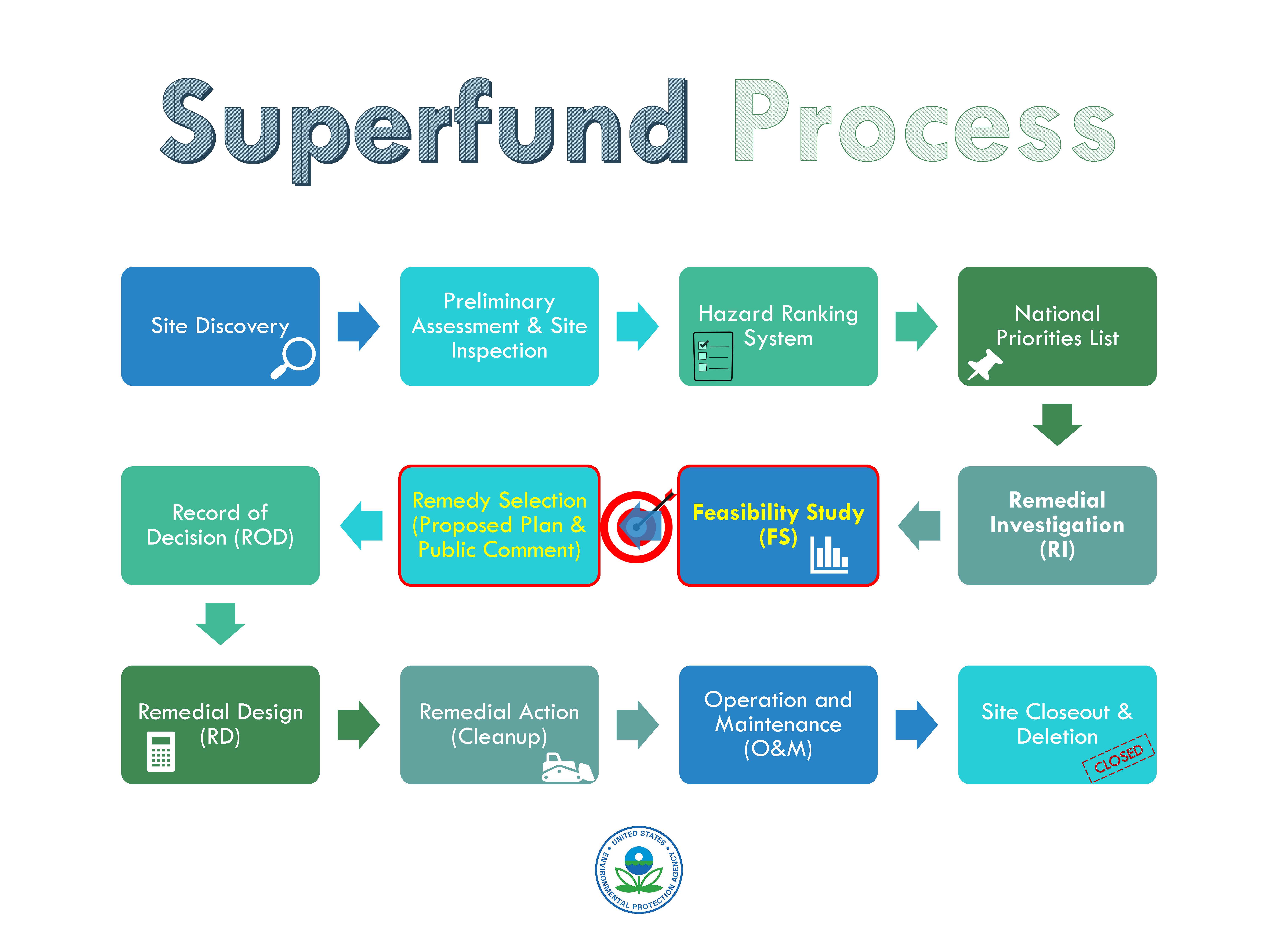

Rolling Knolls Landfill Timeline
